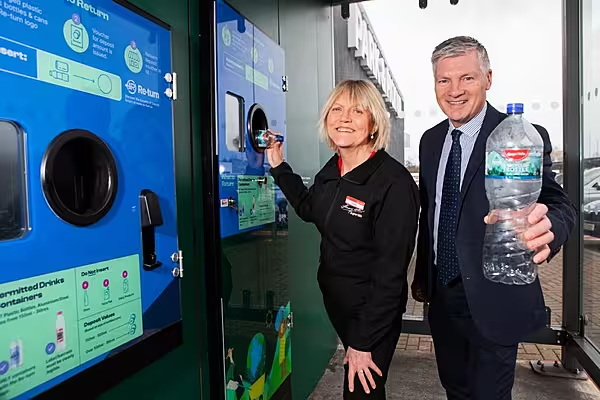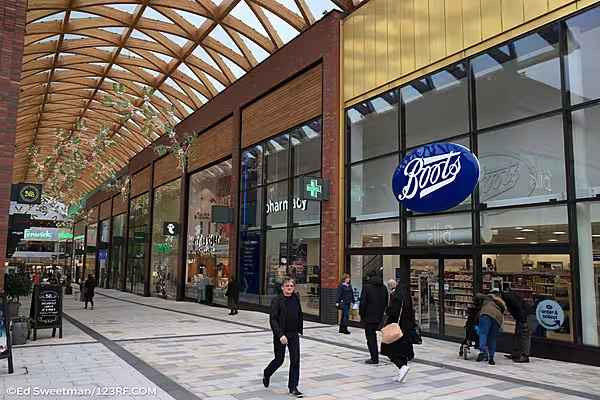Confident it can crack the $300 billion U.S. clothing and shoes market where many other foreign retailers have failed, Britain's Primark is ready to raise its bet on the country by securing new sources of fast fashion in central America.
Primark, whose trendy clothes at rock-bottom prices have taken UK shoppers by storm, opened in Boston in 2015 and now has nine stores in the northeast, all served by a warehouse in Pennsylvania that could still serve three times as many stores.
It has invested 250 million pounds ($313 million) in the United States, achieved a critical mass of sales and has a four-year education under its belt on a crowded market that is battling to stay afloat in the face of rapid e-commerce growth.
Now its owner, London-listed conglomerate Associated British Foods, is convinced Primark's disciplined store-by-store approach can succeed in a country that has been a graveyard for some of Britain's biggest retailers, including Marks & Spencer, Tesco and most recently Philip Green's Topshop.
"I believe that the U.S. will be a winner for Primark," John Bason, AB Foods' finance director, told Reuters.
That confidence is underlined by a move to create a supply chain closer to the U.S. market.
Primark currently sources all its clothes for the United States from its traditional supplier countries of China, India, Bangladesh, Cambodia, Vietnam and Turkey - a costly exercise as stock is freighted across the Pacific, through the Panama Canal and up the U.S eastern seaboard.
The plan now is to tap suppliers from countries in central America, such as Guatemala, Costa Rica and Mexico.
"We're getting to that point now, with the sales level that we've got in the U.S. already," said Bason, a 20-year veteran of AB Foods.
"Certainly countries in central America I think would really start to come through."
Founded by the late Arthur Ryan in Dublin in 1969, Primark trades from 373 stores in 12 countries, turning over 7.5 billion pounds and making 843 million pounds of profit in its 2017-18 financial year, a near fourfold increase in ten years - all achieved without venturing into online shopping.
Primark, Britain's biggest fashion retailer by number of items sold, has made its mark on price, selling T-shirts and swimsuits for as a little as five pounds - its customers often laden with its trademark brown paper bags. Those economics make an online offer untenable.
Primark contributes more than half of the total profit of its parent, which also owns major sugar and grocery arms and has a stock market value of £18 billion.
Some analysts believe Primark's combination of value, fashionability and breadth of range, means it could build a U.S. business over the next decade as big as its one in Europe.
'Threaten Value'
That would threaten value fashion retailers like Old Navy, American Eagle and Target on their own turf, and pitch it against Sweden's H&M, which trades from 578 stores in the United States, and Spain's Inditex, which has 102.
Primark's tenth U.S. store will open at American Dream, New Jersey, this autumn, followed by one in Florida in 2020, its first outside the northeast corridor. Contracts have also been exchanged on a store in Chicago.
Stores in highly populated cities on the eastern seaboard at locations with high footfall will follow.
Bason said a decision to downsize three Primark stores - Freehold Raceway in New Jersey, Danbury Fair in Connecticut and King of Prussia in Pennsylvania - was critical to fine tuning its U.S. model.
'Virtuous Circle'
Sales levels were maintained from smaller footprints - sales densities went up, while operating costs went down, which meant profitability improved. Conversely the profitability of the Boston store was raised by increasing its size.
"If you talk about learnings, that really was the key, it's the big one," said Bason.
"You add more stores and each one a profitable store, then the overall profitability will increase... now you are in a virtuous circle."
AB Foods said this month that Primark was delivering strong sales growth in the United States and forecast a significantly reduced operating loss for 2018-19, which reflects the deliberate under utilisation of its warehouse.
"At some point ... you would then put a second warehouse somewhere else, strategically placed, and start to add stores from that location," said Bason, noting any move into California would necessitate a warehouse west of the Rocky Mountains.
"The thing that goes to the heart of Primark is learn about the individual market - it was always Arthur's mantra."
News by Reuters, edited by Donna Ahern Checkout. Click subscribe to sign up for the Checkout print edition.





